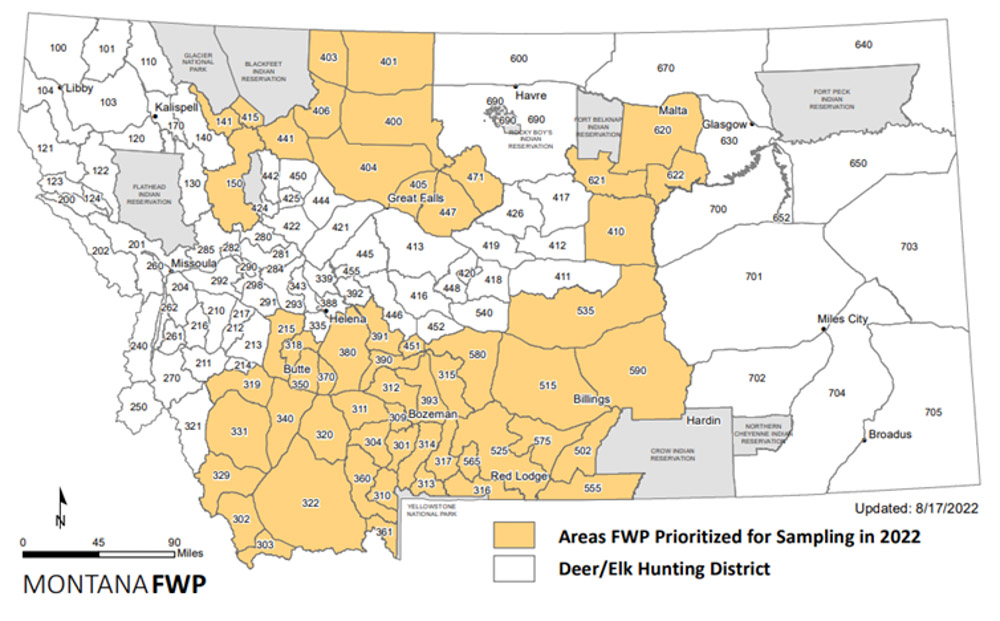Below is a communication from Montana Fish, Wildlife and Parks.
Dear Montana Hunter,
Montana Fish, Wildlife & Parks needs your help in managing and monitoring chronic wasting disease. CWD is a fatal disease of deer, elk and moose that was first found in wild deer in Montana in 2017.
This year FWP will continue CWD surveillance in specific areas known as Priority Sampling Areas in northcentral, central, southwestern, and southcentral Montana. Hunters who harvest a deer, elk or moose in these areas are asked to voluntarily submit their animal for sampling to help gather additional data for that area. This information will be used to help inform the best management strategies for the affected hunting districts.
FWP is paying for the testing of samples and can help hunters get their deer, elk, or moose tested. Hunters can take the samples themselves, fill out the online hunter submission form available on our website, and mail them to our Wildlife Health Lab in Bozeman. Hunters also can bring the animal (or head) to a CWD Sampling Station or to most FWP offices. Not all FWP offices can offer help with sampling, so please call ahead to check on availability and to ensure your visit is timely, quick and smooth. If you intend to donate your deer, elk, or moose to a food bank, FWP strongly recommends that it be sampled for CWD testing beforehand and properly dispose of any that tests positive.
If you intend to use scents to either mask human odor or as an attractant for deer and elk, you should be aware that the Montana Fish and Wildlife Commission adopted regulations in 2021 on which ones you can use. You are safest if you use artificial scents, but you can also use scents certified by the Responsible Hunting Scent Association. You can identify these with the DPP or RtQUIC labels on them.
The head and skull containing brain material and the spinal cover must be left in the field unless it is being transported for meat processing or taxidermy. If not left in the field, all carcasses and parts must be disposed of in a Class II landfill. Carcass parts, including brain, eyes, spleen, lymph glands, and spinal cord material, must be bagged and disposed of in a Class II landfill or may be left at the kill site. Dumping carcasses or parts in other places is illegal, unethical, and can spread CWD and other diseases. Because CWD occurs in many portions of the state, this disposal requirement applies to all deer, elk, and moose carcasses wherever in the state they are harvested by hunters or as vehicle-killed salvage. Remember, state law makes it unlawful to import deer, elk, or moose harvested in other states unless the brain and spinal tissue has been removed from the skull before you return to Montana.
If left unmanaged, CWD will spread. As infection rates increase, it can have a significant impact on our wildlife and those, like yourself, who hunt them. Thank you for your help as we fight CWD together.
For more information, please contact your local FWP office or visit fwp.mt.gov/cwd, where you can find a wealth of information, including how to take your own samples, FWP sample collection locations and hours of operation, and maps of our Priority Surveillance Areas and Class II landfills.
(Photo credit: Montana Fish, Wildlife and Parks)
